Derivation of Engineering Design Criteria for Flow Field Around Intake Structure: A Numerical Simulation Study
Abstract
1. Introduction
2. Method
2.1. Numerical Model
2.2. Model Setup
2.3. Mesh Sensitivity Study
2.4. Model Validation
3. Results and Discussion
3.1. Fundamental Relationships
3.1.1. Effect of Horizontal Shelf (ℓvc)
3.1.2. Effect of Vertical Opening (Hvc)
3.1.3. Effect of Velocity Cap Size (ωvc)
- Intake rate (Q): 6–60 m3/s
- Vertical opening (Hvc): 1.0–6.5 m
- Horizontal shelf (ℓvc): 3.1–9.6 m
- Area of the velocity cap (Avc): 152–520 m2
- Size of velocity cap (ωvc): 152–3122 m3
- Size of intake tower (ωΙΤ): 450 m3
3.2. Engineering Design Criteria
- Intake rate (Q): 6–60 m3/s
- Vertical opening (Hvc): 1.0–6.5 m
- Horizontal shelf (ℓvc): 3.1–9.6 m
- Area of the velocity cap (Avc): 152–520 m2
- Size of velocity cap (ωvc): 152–3122 m3
- Size of intake tower (ωΙΤ): 240–450 m3
4. Conclusions
- (a)
- This study has demonstrated the usefulness of velocity cap in mitigating intake velocity. The key design parameters for velocity cap is velocity cap size (ωvc), which comprises of the horizontal shelf (ℓvc) and vertical opening (Hvc). The recommended intake opening ratio (Or) shall be 0.36Vr−0.31, where Or =Hvc/ℓvc and Vr =V0/Vpipe. Vo is the velocity at the intake window and Vpipe is the suction velocity at the intake pipe.
- (b)
- With increased velocity cap size, the intake velocity is reduced. The volume ratio (ωr) between the velocity cap (ωvc) and intake tower (ωIT) is recommended at 0.11Vr−1.23.
- (c)
- The primary environmental impact caused by intake operation is marine life impingement resulting from the intake velocity. Therefore, it is reasonable to regulate intake velocity as an environmental safety factor. However, to the author’s best knowledge, most of the country has no single regulation used to enforce the intake performance for environment protection purposes. Thus, the maximum allowable intake value of 0.15 m/s, used by the United States as their national screening value for the permissible regulation of intake velocity, shall be used as reference to establish engineering design criteria for seawater intake structures. This value has been widely utilized to indicate that an intake structure has low potential adverse environmental impact.
Author Contributions
Funding
Acknowledgments
Conflicts of Interest
References
- Pita, E. Seawater intakes for desalination plants: Design and construction. In Proceedings of the International Conference on Desalination, Environment and Marine Outfall Systems, Muscat, Oman, 13–16 April 2014. [Google Scholar]
- Voutchkov, N. Design and construction of open intakes. In Sustainable Desalination Handbook: Plant Selection, Design and Implementation; Gude, V.G., Ed.; Elsevier: Oxford, UK, 2018; pp. 201–226. [Google Scholar]
- Lattemann, S.; Höpner, T. Environmental impact and impact assessment of seawater desalination. Desalination 2008, 220, 1–15. [Google Scholar] [CrossRef]
- Pankratz, T. An overview of seawater intake facilities for seawater desalination. In The Future of Desalination in Texas; Biennial Report on Water Desalination, Texas Water Development: Austin, TX, USA, 2004; Volume 2, pp. 1–12. [Google Scholar]
- WateReuse Association. White paper on desalination plant intakes: Impingement and entrainment impacts and solutions. Desalin. Comm. 2011. [Google Scholar] [CrossRef]
- Environmental Protection Agency (EPA). National pollution discharge elimination system—Final regulations to establish requirements for cooling water intake structures at existing facilities and amend requirements at Phase I facilities: Final rule. Fed. Regist. 2014, 79, 48300. [Google Scholar]
- Turnpenny, A.W.H.; Keeffe, N.O. Screening for Intake and Outfalls: A Best Practice Guide; Science Report SC030231; Environment Agency: Bristol, UK, 2005.
- Pankratz, T. Overview of intake systems for seawater reverse osmosis facilities. In Intakes and Outfalls for Seawater Reverse-Osmosis Desalination Facilities: Innovations and Environmental Impacts; Missimer, T.M., Jones, B., Maliva, R.G., Eds.; Springer: New York, NY, USA, 2015; pp. 3–17. [Google Scholar]
- Pita, E.; Sierra, I. Seawater Intake Structures. In Proceedings of the International Symposium on Outfall Systems, Mar del Plata, Argentina, 15–18 May 2011. [Google Scholar]
- Environmental Protection Agency (EPA). Requirements Applicable to Cooling Water Intake Structures for New Facilities under Section 316(b) of the Act; US Electronic Code of Federal Regulations: Washington, DC, USA, 2001; Volume 40.
- Electric Power Research Institute (EPRI). Technical Evaluation of the Utility of Intake Approach Velocity as an Indicator of Potential Adverse Environmental Impact under Clean Water Act Section 316(b); Final Report; EPRI Inc.: Palo Alto, CA, USA, 2000; p. 1000731. [Google Scholar]
- National Marine Fisheries Service (NMFS). Fish Screening Criteria for Anadromous Salmonids; U.S. Department of Commerce, National Oceanic and Atmospheric Administration: Washington, DC, USA, 1997.
- Pearce, R.O.; Lee, R.T. Some design considerations for approach velocities at juvenile salmonid screening facilities. Am. Fish. Soc. Symp. 1991, 10, 237–248. [Google Scholar]
- Schuler, V.J.; Larson, L.E. Improved fish protection at intake systems. J. Environ. Eng. Div. ASCE 1975, 101, EE6. [Google Scholar]
- Moideen, R.; Ranjan Behera, M.; Kamath, A.; Bihs, H. Effect of girder spacing and depth on the solitary wave impact on coastal bridge deck for different airgaps. J. Mar. Sci. Eng. 2019, 7, 140. [Google Scholar] [CrossRef]
- Gomes, A.; Pinho, J.L.S.; Valente, T.; Antunes do Carmo, J.S.; Hegde, A. Performance assessment of a semi-circular breakwater through CFD modelling. J. Mar. Sci. Eng. 2020, 8, 226. [Google Scholar] [CrossRef]
- Karami, H.; Farzin, S.; Sadrabadi, M.T.; Moazeni, H. Simulation of flow pattern at rectangular lateral intake with different dike and submerged vane scenarios. J. Water Sci. Eng. 2017, 10, 246–255. [Google Scholar] [CrossRef]
- Ruether, N.; Singh, J.M.; Olsen, N.R.B.; Atkinson, E. 3D computation of sediment transport at water intakes. In Proceedings of the Institution of Civil Engineers: Water Management; Thomas Telford Ltd.: London, UK, 2005; Volume 158, pp. 1–8. [Google Scholar]
- Aqvaspace Sdn. Bhd. Marine Data Collection around Perai CCGT Power Plant, Penang; Survey report: AQSP/RPT/07-2017/G&P/DTC/10096; Aqvaspace Sdn. Bhd.: Selangor, Malaysia, 2017; pp. 1–54, Unpublished Report. [Google Scholar]
- Chie, L.H.; Abd Wahab, A.K.; Yapandi, F.K.M. Performance of different turbulence models in predicting flow kinematics around and open offshore intake. SN Appl. Sci. 2019, 1, 1266. [Google Scholar]
- Yakhot, V.; Smith, L.M. The renormalization group, the e-expansion and derivation of turbulence models. J. Sci. Comput. 1992, 7, 35–61. [Google Scholar] [CrossRef]
- Royal Malaysian Navy. Tide Table Malaysa: Volume 1; National Hydrographic Centre: Klang, Selangor, Malaysia, 2017.
- American Society of Mechanical Engineers (ASME). Standard for Verification and Validation in Computational Fluid Dynamics and Heat Transfer; ASME: New York, NY, USA, 2009. [Google Scholar]
- Department of Irrigation and Drainage (DID). Guidelines for Preparation of Coastal Engineering Hydraulic Study and Impact Evaluation; Department of Irrigation and Drainage: Kuala Lumpur, Malaysia, 2001.
- Liu, Y.; Zhao, Y.P.; Dong, G.H.; Guan, C.T.; Cui, Y.; Xu, T.J. A study of the flow field characteristics around star-haped artificial reefs. J. Fluids Struct. 2013, 39, 27–40. [Google Scholar] [CrossRef]
- Liu, T.L.; Su, D.T. Numerical analysis of the influence of reef arrangements on artificial reef flow fields. Ocean Eng. 2013, 74, 81–89. [Google Scholar] [CrossRef]
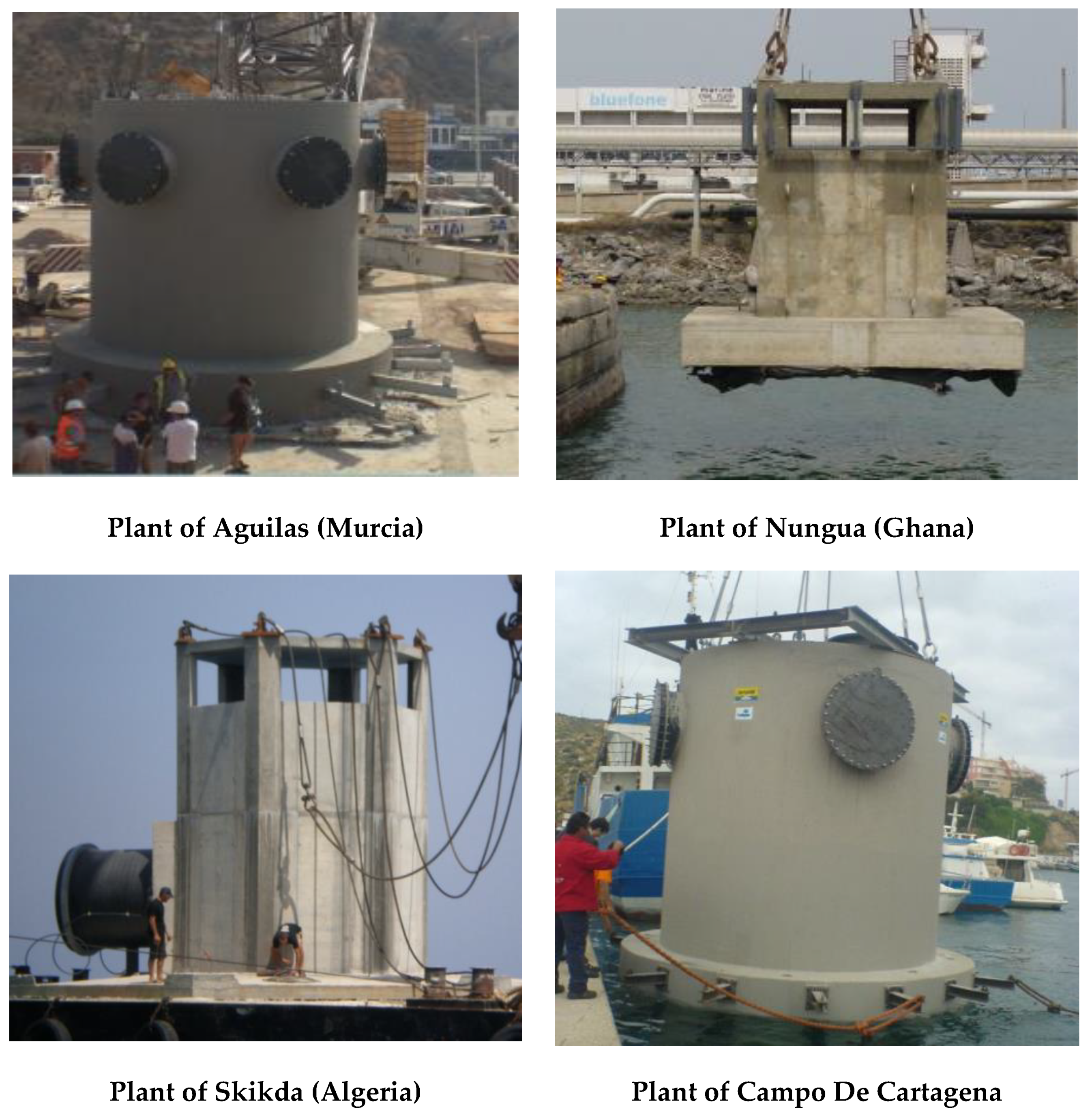
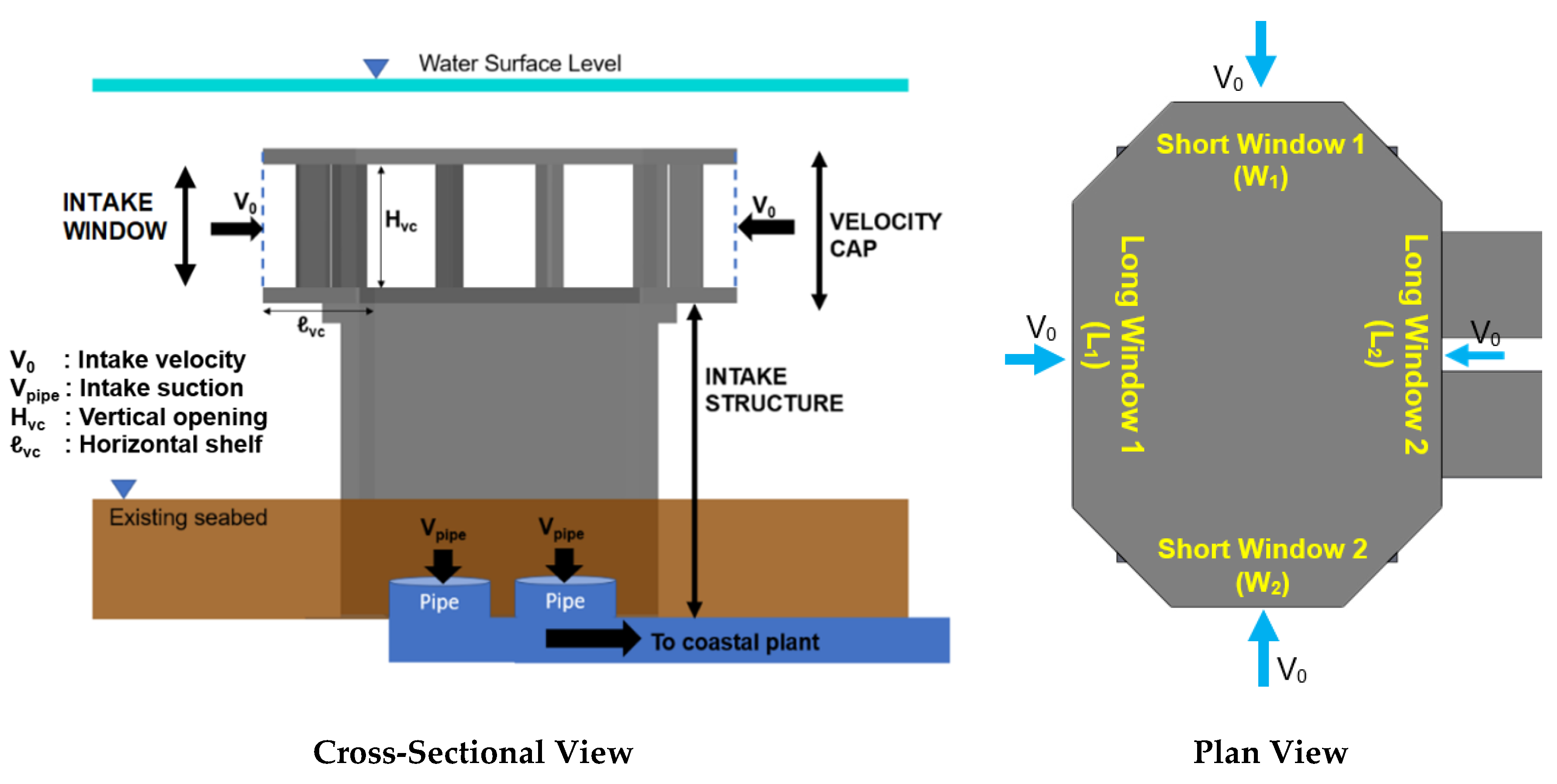
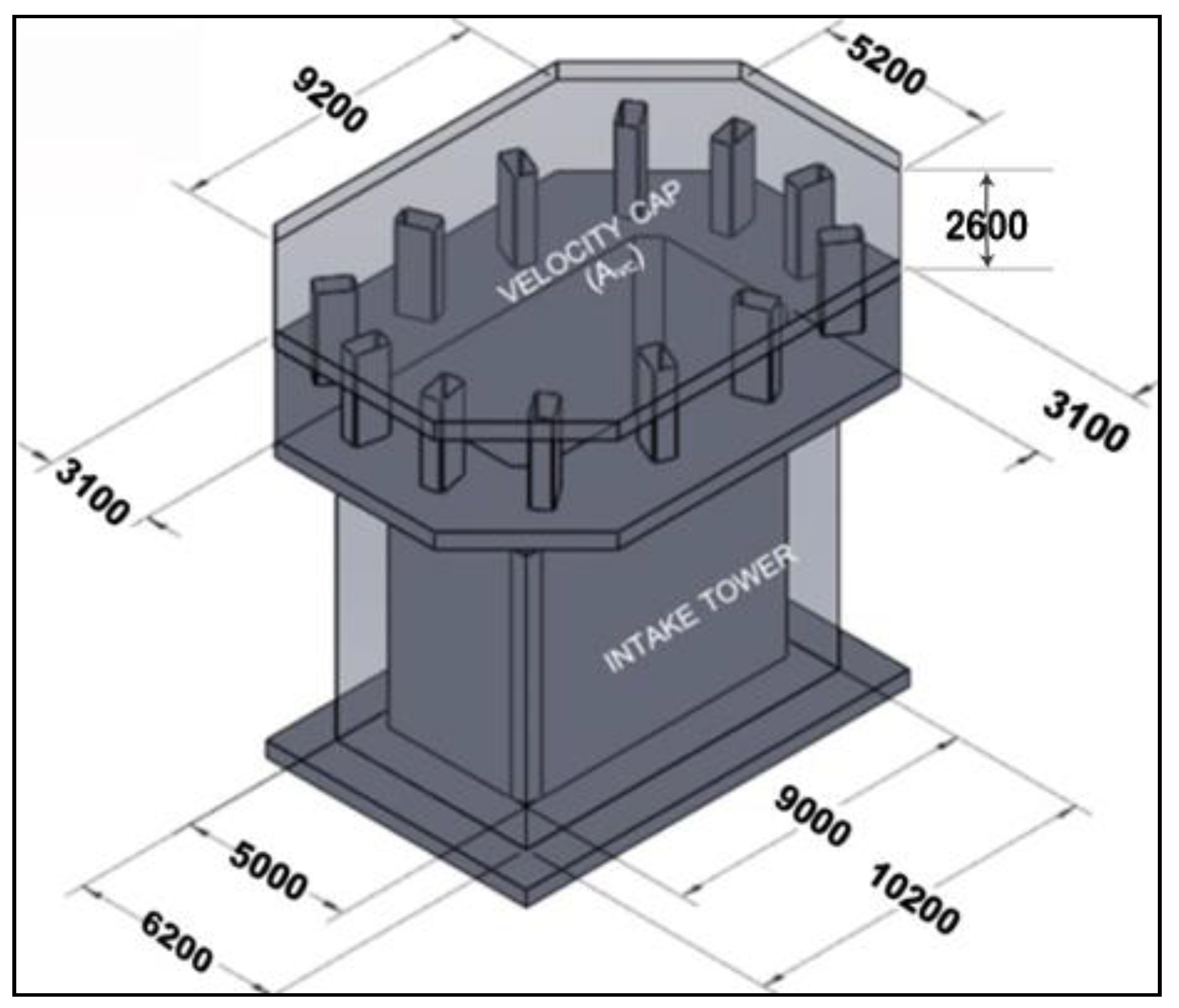
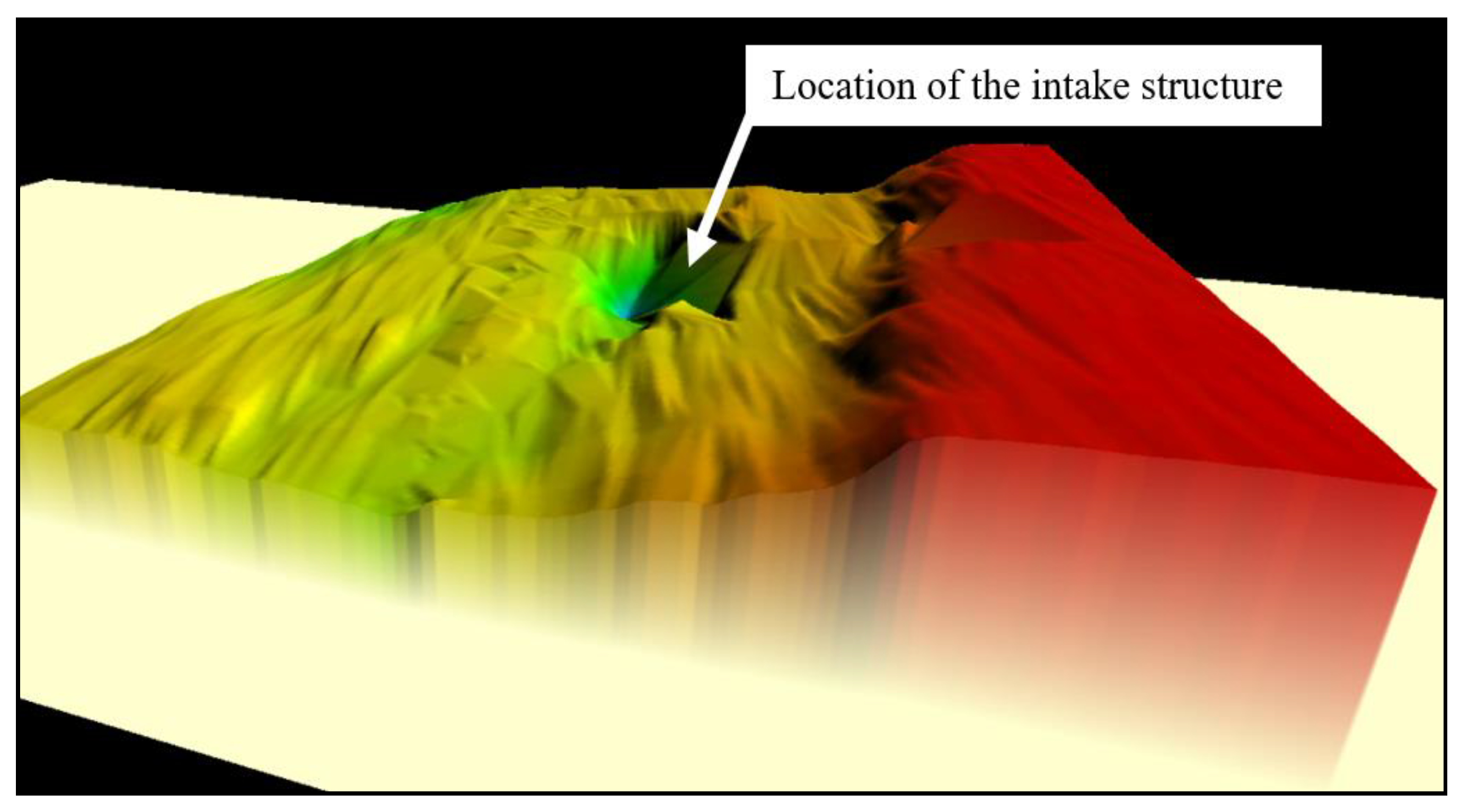
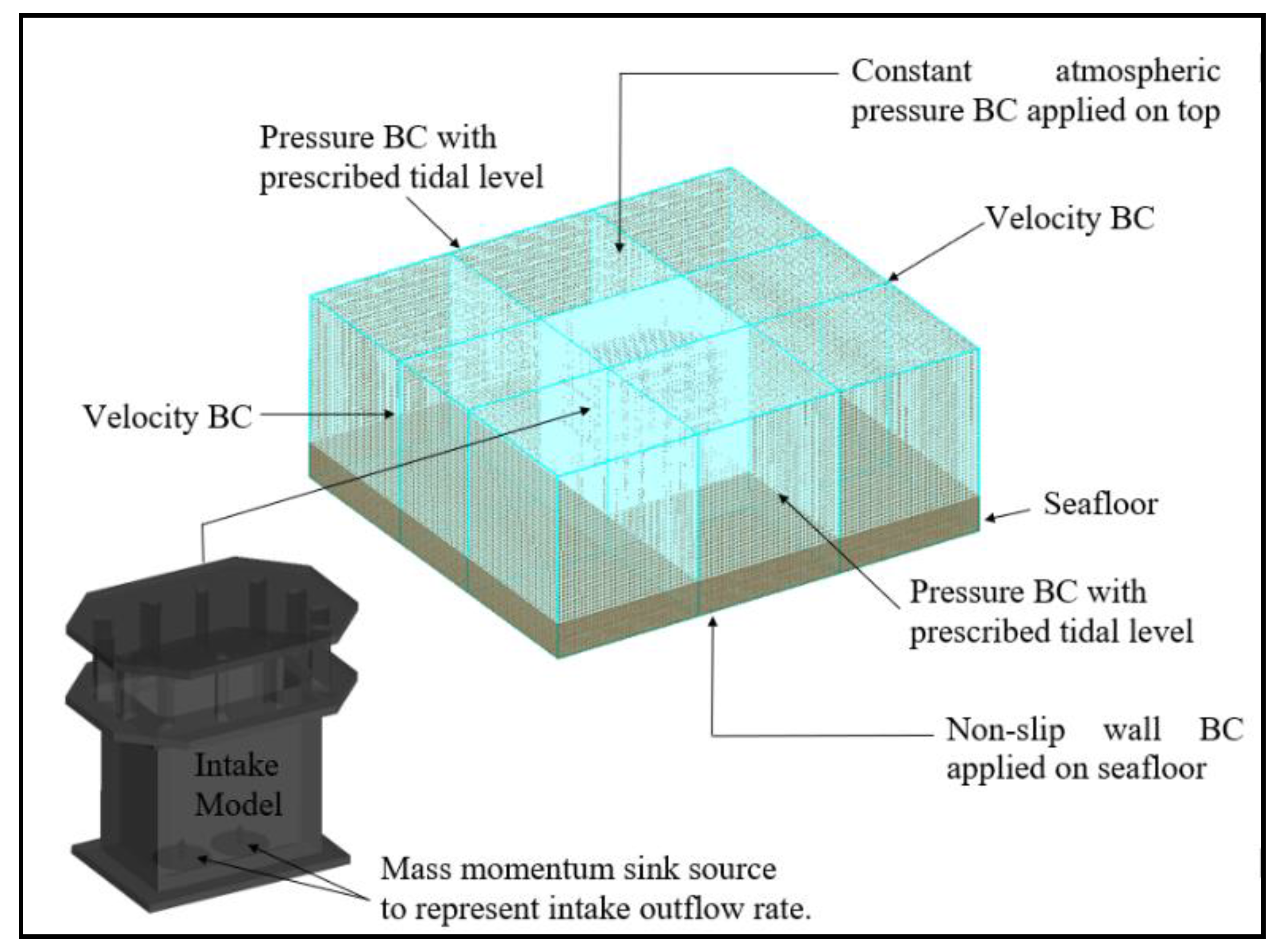
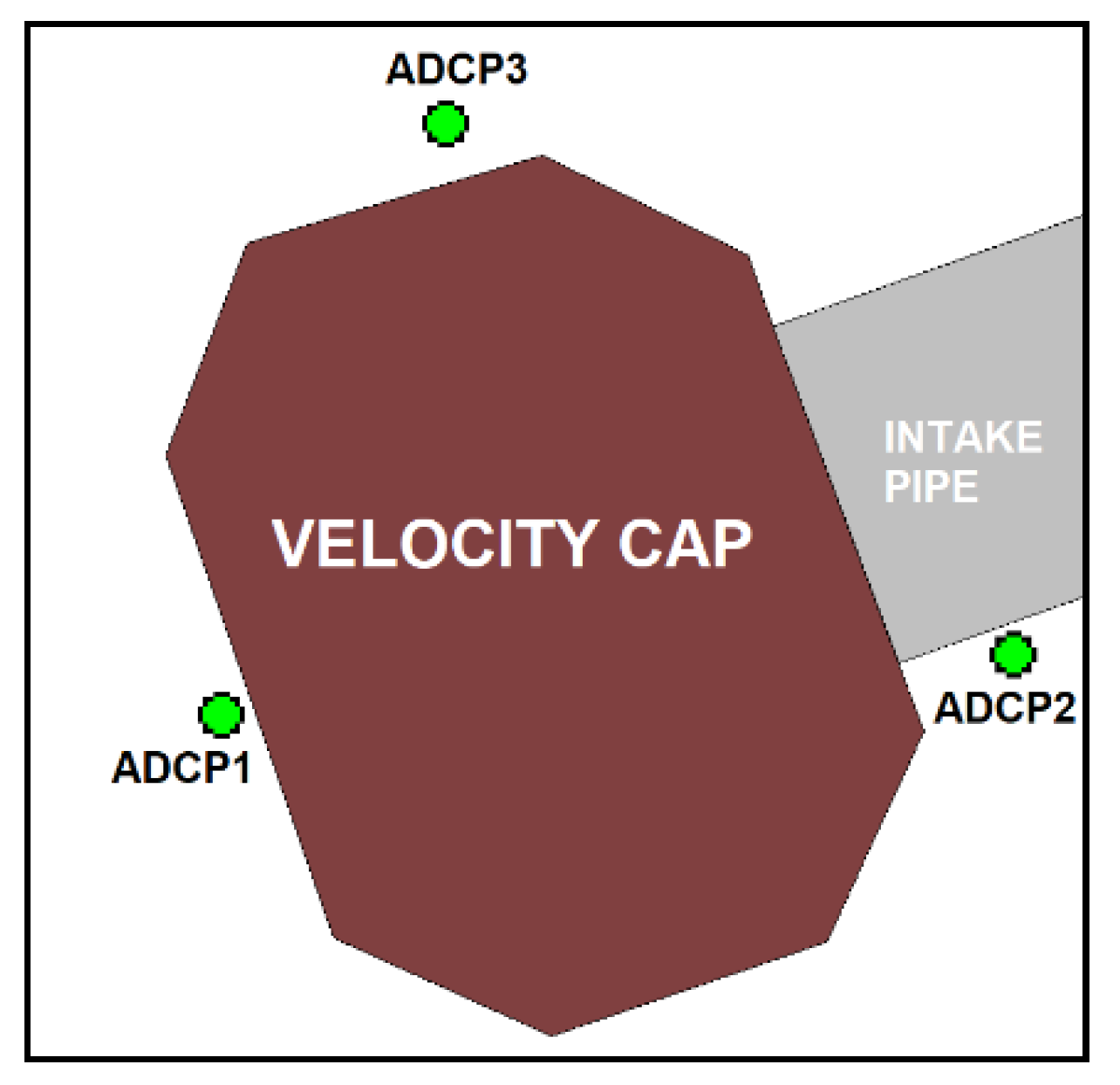
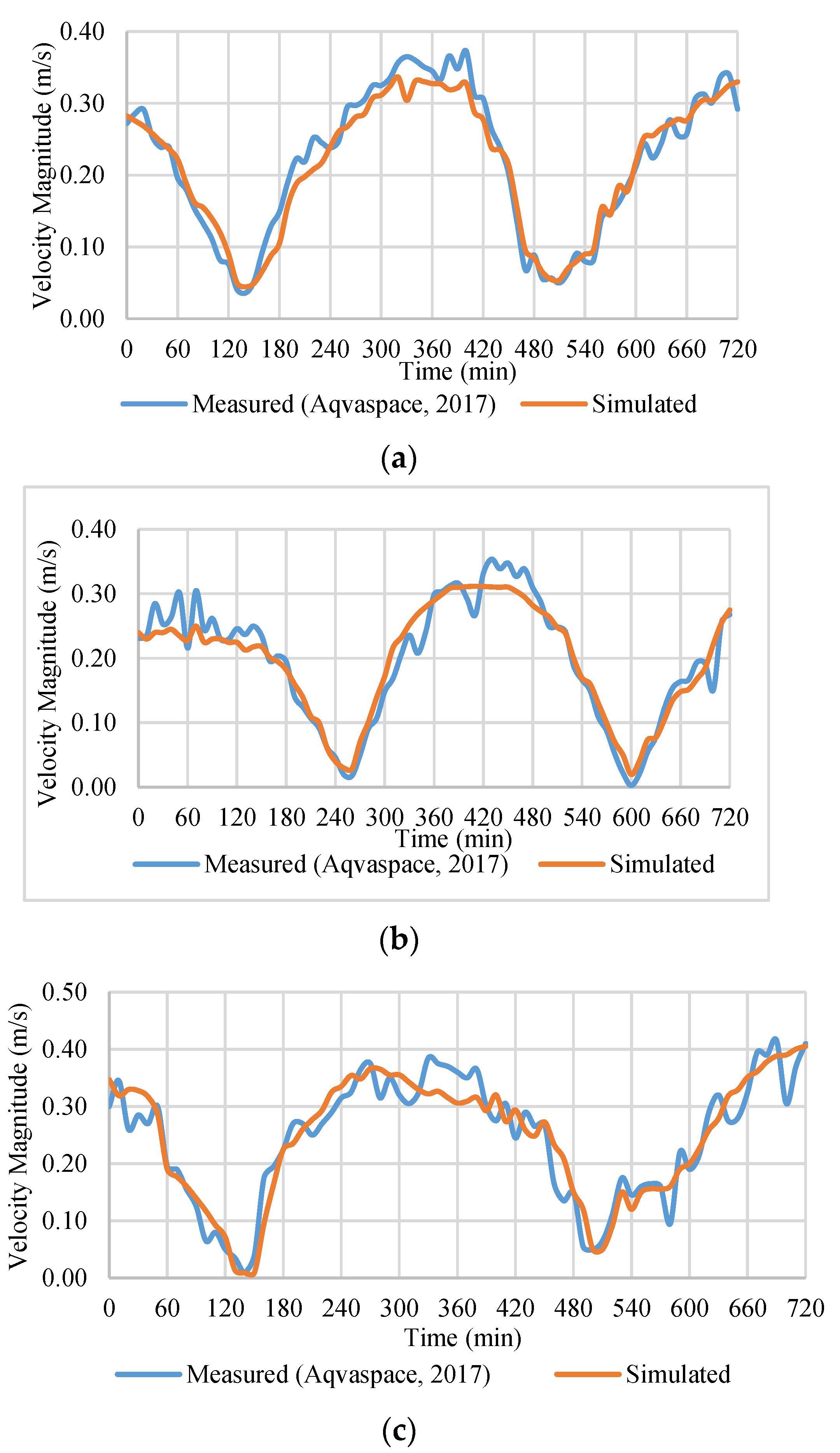
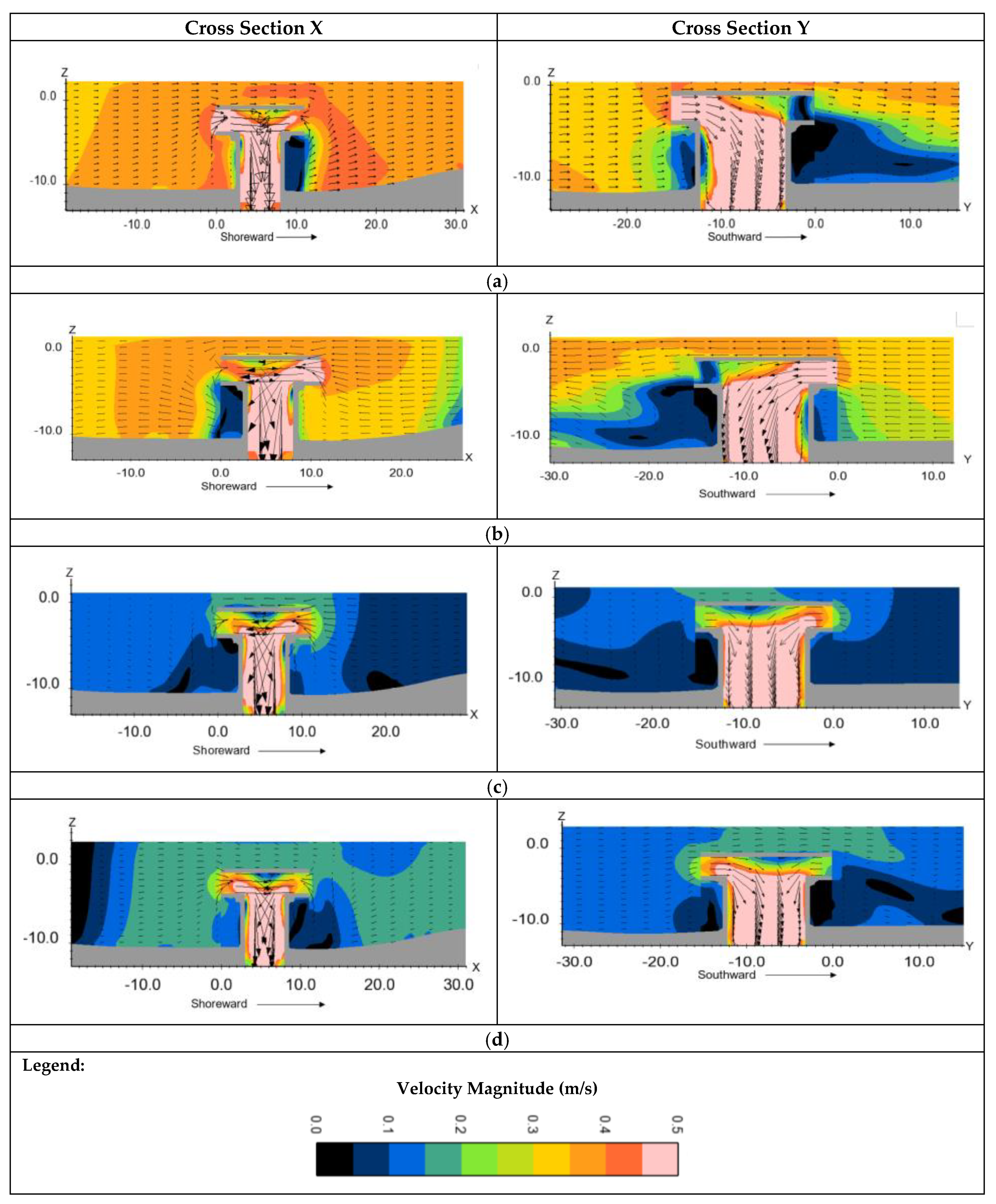

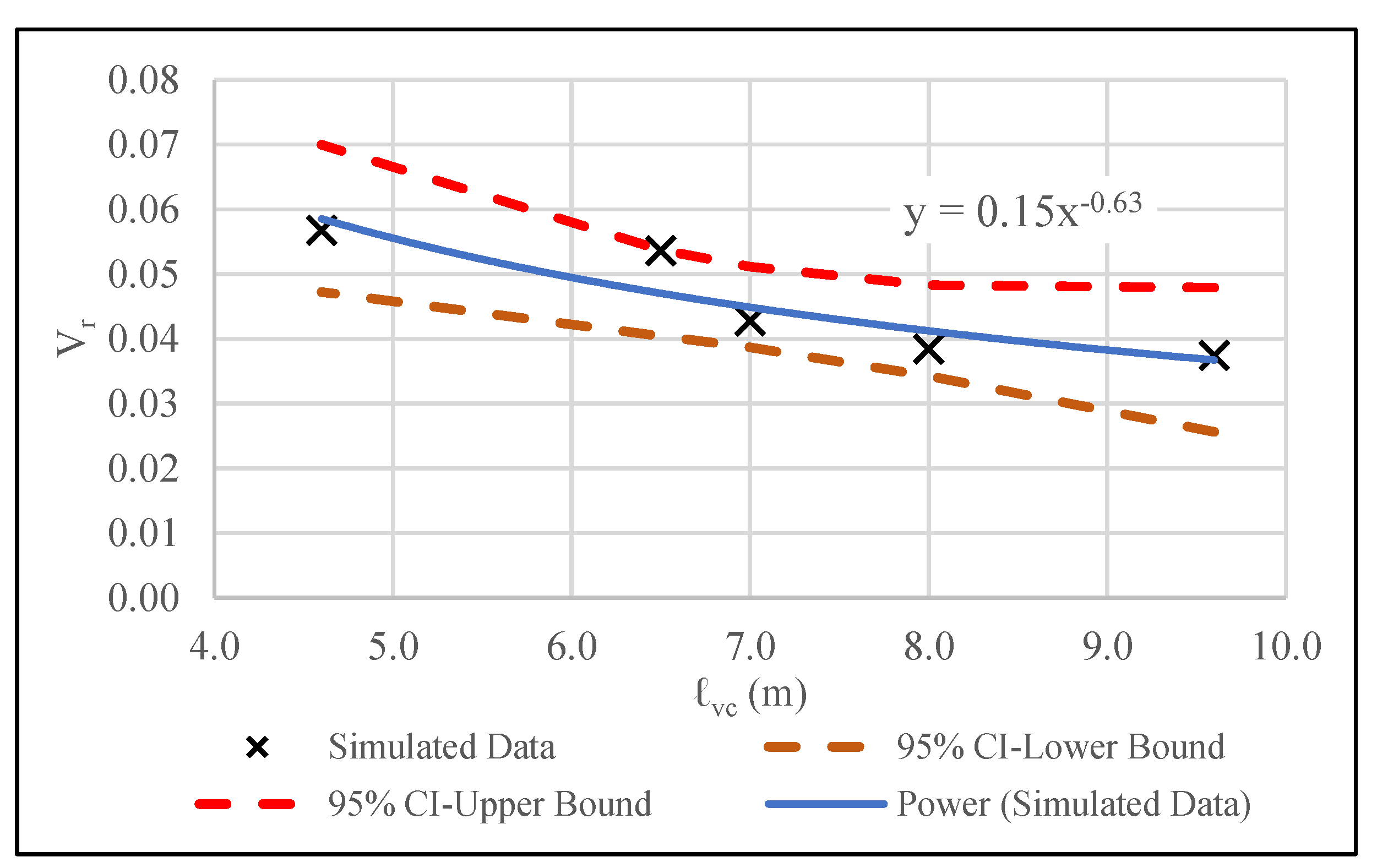
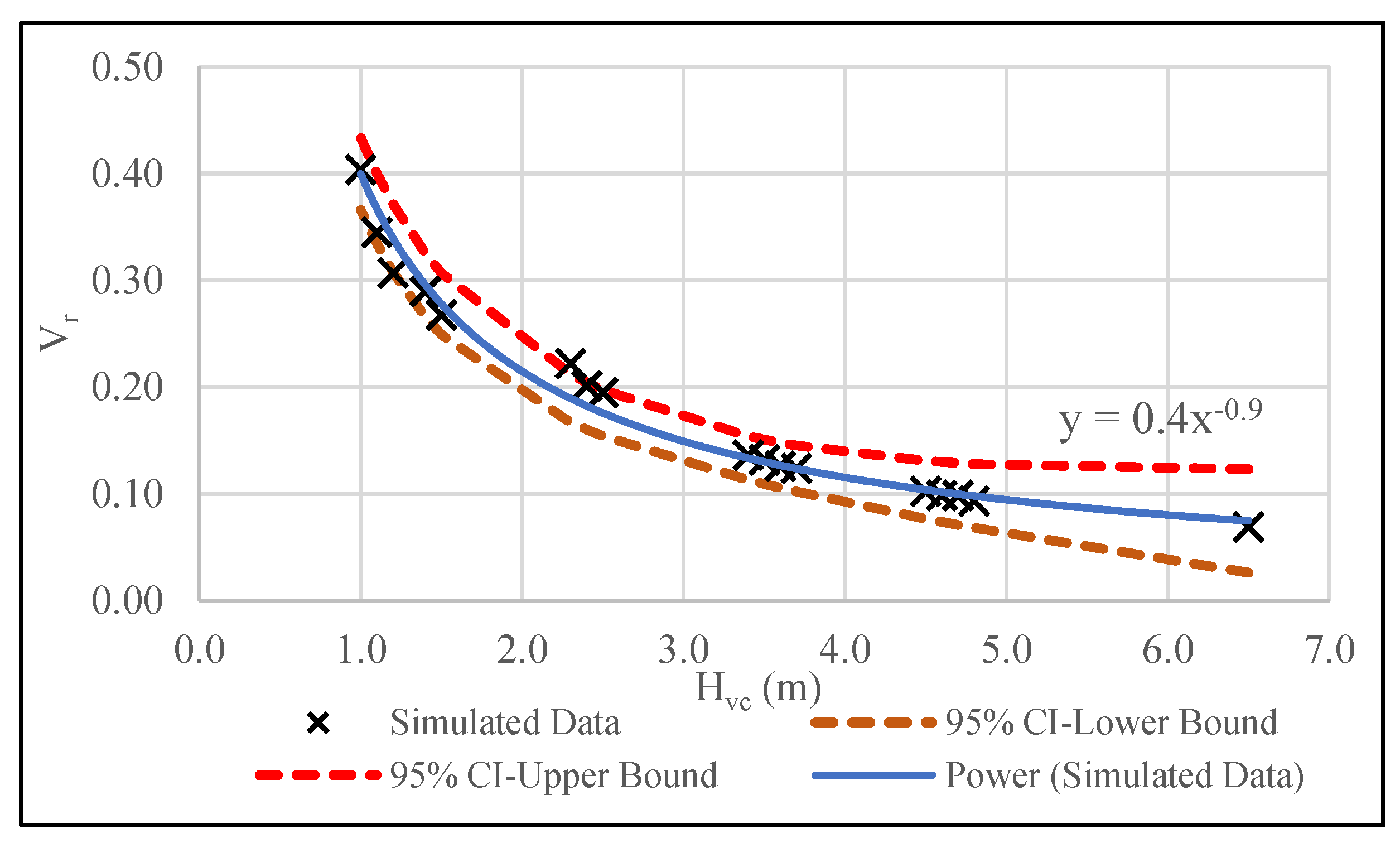
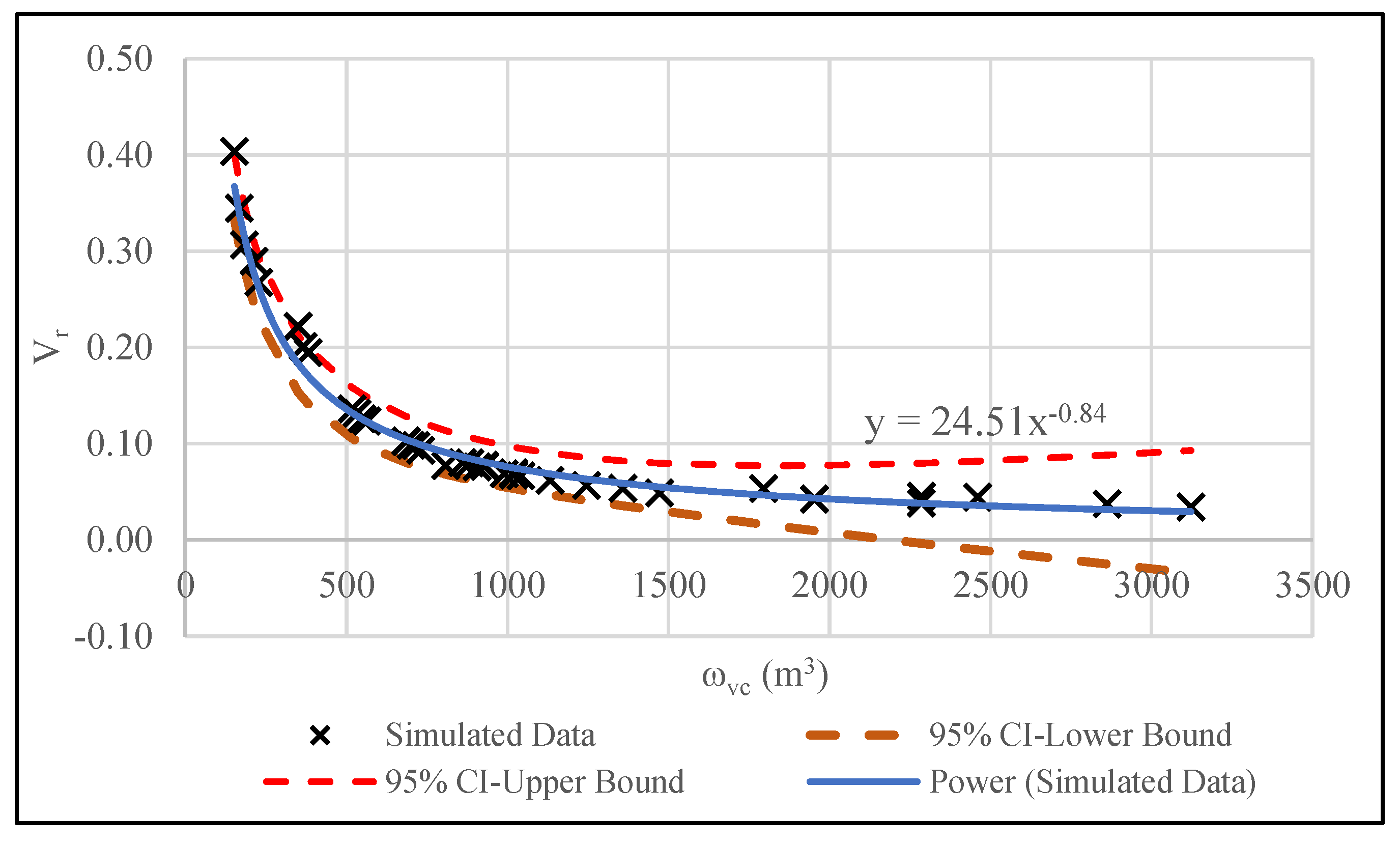


| Tested Grid | Coarse Grid (M1) | Medium Grid (M2) | Fine Grid (M3) | |
|---|---|---|---|---|
| Grid Info | ||||
| Total grid cells | 355,296 | 792,028 | 1,682,826 | |
| Min. grid size (h) | 0.29 | 0.22 | 0.17 | |
| Max. grid size (h) | 0.52 | 0.40 | 0.31 | |
| Grid refinement factor (r) | hM1/hM2 = 1.3 | hM2/hM3 = 1.3 | ||
| Tested Grid | No. Grid Cells | Intake Velocity (m/s) | |||
|---|---|---|---|---|---|
| Short Window 1 | Differential (M2−M1) (M3−M2) | Short Window 2 | Differential (M2-M1) (M3-M2) | ||
| Coarse Grid (M1) | 355,296 | 0.21 | 0.23 | ||
| Medium Grid (M2) | 792,028 | 0.24 | 0.03 | 0.24 | 0.01 |
| Fine Grid (M3) | 1,682,826 | 0.23 | −0.01 | 0.24 | 0.00 |
| Tested Grid | No. grid cells | Long Window 1 | Differential (M2-M1) (M3-M2) | Long Window 2 | Differential (M2-M1) (M3-M2) |
| Coarse Grid (M1) | 355,296 | 0.26 | 0.24 | ||
| Medium Grid (M2) | 792,028 | 0.25 | −0.01 | 0.25 | 0.01 |
| Fine Grid (M3) | 1,682,826 | 0.26 | 0.01 | 0.25 | 0.00 |
| Station | %RMSE | r2 | MAE (m) |
|---|---|---|---|
| ADCP1 | 6.81 | 0.98 | 0.02 |
| ADCP2 | 7.16 | 0.97 | 0.02 |
| ADCP3 | 9.63 | 0.94 | 0.03 |
| Design Parameter | Symbol | Design Formulation |
|---|---|---|
| Intake velocity ratio | Vr | V0/Vpipe where V0 is the design criteria for intake velocity |
| Pipe velocity (m/s) | Vpipe | Q/Apipe where Q = intake rate (m3/s) and Apipe = πDpipe2/4 |
| Intake opening ratio | Or | . where Or = Hvc/ℓvc |
| Volume ratio | ωr | where ωr = ωvc/ωIT |
Publisher’s Note: MDPI stays neutral with regard to jurisdictional claims in published maps and institutional affiliations. |
© 2020 by the authors. Licensee MDPI, Basel, Switzerland. This article is an open access article distributed under the terms and conditions of the Creative Commons Attribution (CC BY) license (http://creativecommons.org/licenses/by/4.0/).
Share and Cite
Chie, L.H.; Abd Wahab, A.K. Derivation of Engineering Design Criteria for Flow Field Around Intake Structure: A Numerical Simulation Study. J. Mar. Sci. Eng. 2020, 8, 827. https://doi.org/10.3390/jmse8100827
Chie LH, Abd Wahab AK. Derivation of Engineering Design Criteria for Flow Field Around Intake Structure: A Numerical Simulation Study. Journal of Marine Science and Engineering. 2020; 8(10):827. https://doi.org/10.3390/jmse8100827
Chicago/Turabian StyleChie, Lee Hooi, and Ahmad Khairi Abd Wahab. 2020. "Derivation of Engineering Design Criteria for Flow Field Around Intake Structure: A Numerical Simulation Study" Journal of Marine Science and Engineering 8, no. 10: 827. https://doi.org/10.3390/jmse8100827
APA StyleChie, L. H., & Abd Wahab, A. K. (2020). Derivation of Engineering Design Criteria for Flow Field Around Intake Structure: A Numerical Simulation Study. Journal of Marine Science and Engineering, 8(10), 827. https://doi.org/10.3390/jmse8100827






